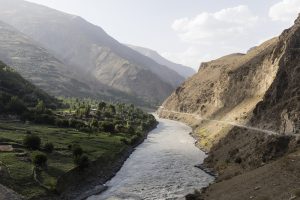On September 2, 2023, on the orders of President Emomali Rahmon, border markets in Khorog, Darvaz, Vanj, and Ishkashim districts of Tajikistan’s Gorno-Badakhshan region opened for business with Afghanistan. Movement across the Afghanistan-Tajikistan border had been officially suspended since August 2021 and the markets were closed. The sudden decision to re-open them has been seen as a sign of a potential normalization of relations between the two countries. However, more than three months since, little seems to have actually changed and bilateral ties continue to remain frosty.
Tajikistan is the strongest critic of the Taliban in Central Asia. Immediately after the Taliban takeover, Rahmon vowed not to recognize the Taliban’s Islamic Emirate as it was “formed through oppression.” He criticized the Taliban for ignoring the rights of ethnic Tajiks in Afghanistan and vowed his support for an inclusive government in the country. The Taliban responded by warning Tajikistan not to interfere in Afghanistan’s internal affairs. Such was the bitterness in the exchange of rhetoric that in October 2021 then-Pakistani Prime Minister Imran Khan dialed Rahmon to ask him to tone down his criticism.
Tajik officials have repeatedly complained of drug and refugee traffic along the 1,360-kilometer border with Afghanistan. Historically, Tajikistan has been a temporary haven for Afghans fleeing persecution, economic hardship, and instability in their home country. Thousands of Afghans crossed the mountainous border into neighboring Tajikistan a few months before the Taliban returned to power and in the months after. The UNHCR estimates the total number of Afghan refugees in Tajikistan to be 10,000. Many of them are waiting to migrate to Europe, the United States, and especially Canada, which has accepted 40,000 vulnerable Afghans and has expressed its willingness to take even more.
Although on some occasions Tajikistan has deported Afghans, citing the flouting of rules that do not allow refugees to settle in Tajik cities, such rules have only been loosely and occasionally applied. Tajikistan has mostly heeded the UNHCR’s “global non-return advisory” issued to countries hosting Afghan refugees.
In November 2023, I held discussions with former Afghan government officials, politicians, women’s groups, and refugees in Dushanbe. While they sought temporary refuge in Tajikistan, they intend to go back to Afghanistan when conditions improve.
What irks the Taliban the most is Tajikistan playing host to former Afghan officials and opposition leaders, some of whom are part of the National Resistance Front (NRF) movement, which aims to oust the Taliban from Afghanistan. Since August 2021, the Herat Security Dialogue (HSD) has been hosted twice in Dushanbe. At the most recent summit, in November 2023, members of the former political leadership of the Afghan Republic and “resistance” leaders of all ethnicities in Afghanistan called for a unified action plan to fight the Taliban. The HSD, until the fall of Afghanistan’s civilian government, used to be held in its namesake city.
Tajikistan’s confrontationist approach makes it an enemy of the Taliban and target of frequent retributive attacks by the Taliban using cadres of the “Tajik Taliban,” a moniker for the affiliated anti-Tajikistan extremist group, Jamaat Ansarullah (JA). The JA’s avowed objective is to overthrow the government in Dushanbe. In 2023, at least two attacks (in April and September) by JA’s suicide bombers were reportedly thwarted by Tajik security forces in the border region. Weapons, ammunition, religious material, and cash were reportedly seized from the would-be attackers. The Taliban, on the other hand, have allowed the JA to be at the forefront of combating Dushanbe’s unfriendliness by allowing the group to be the lead security force in the five Afghan districts bordering Tajikistan.
It is this recurrent and low-hanging threat that Rahmon may be trying to address by signaling some level of accommodation. However, the Afghan embassy in Dushanbe still represents the deposed Republican regime and runs possibly with assistance from the former Afghan high officials. The Afghan consulate in the city of Khorog, on the other hand, has passed into Taliban control. In November 2023, Zia Ahmad Takal, the deputy spokesperson of the Taliban’s Ministry of Foreign Affairs, shared a video of consulate general Naqibullah Dehghanzada stating allegiance to the Taliban and declaring that the Khorog consulate operates under the Islamic Emirate. The Taliban’s attempt to appoint a first secretary to the Afghan embassy in Dushanbe, however, has been rejected by the current ambassador, Zaher Aghbar. Aghbar, hailing from Panjshir, had his house set afire by the Taliban in June 2023.
Most Central Asian states have opted for engagement with the Taliban and even explored trade and investment opportunities. Tajikistan, on the other hand, seems to have drawn a red line. Despite the occasional moves that appear to be directed at some degree of normalization, Dushanbe’s overarching policy toward the Taliban is unlikely to change in the near term. At the same time, given its shared borders, culture, and ethnicity, Tajikistan will continue to have an impact on Afghanistan’s stability, especially when inclusiveness remains elusive on Kabul’s political landscape.

































